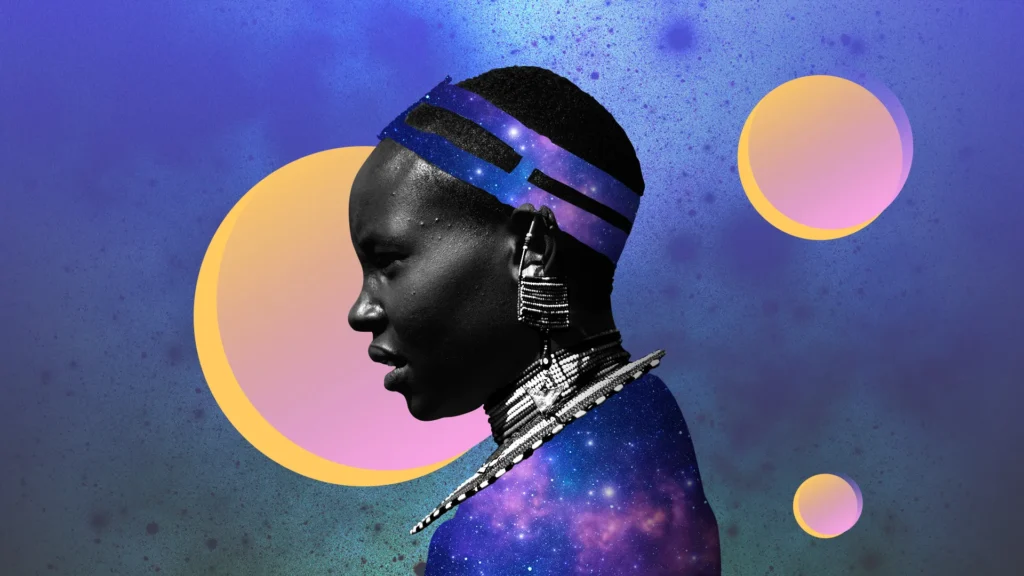How to Build a Sustainable Afrofuturism Publishing Network
Imagine a world where the African experience takes center stage, not just in history books but in stories about the future. That’s the beauty of Afrofuturism—a movement blending African culture with technology and the future. But how can we ensure it’s more than just a fleeting trend in publishing? Building a sustainable Afrofuturism publishing ecosystem is the answer, and it’s crucial for representation, innovation, and inclusivity.
This movement is about creating a publishing platform that celebrates African voices and visions, ensuring they thrive. It means more than telling diverse stories; it’s about establishing a network where these tales can inspire change and challenge perceptions. The possibilities are vast. From novels to graphic art, Afrofuturism offers a fresh way to imagine a future that’s inclusive and sustainable, giving marginalized voices the space they deserve.
In this post, we’ll explore how a robust ecosystem not only supports creators but also enriches readers’ understanding of the potential futures shaped by African narratives. By investing in such a framework, we embrace a future that’s not only creative but equitable—a future that belongs to everyone.
Understanding Afrofuturism
Afrofuturism is more than a genre; it’s a lens through which we can explore Black identity and foresee new futures. By weaving together elements of science fiction, historical fiction, fantasy, and Afrocentricity, Afrofuturism challenges the conventions and reimagines a world where Black people have influence over their own narratives. But what is the cultural significance of this movement, and why does it resonate today? Let’s dig into its origins and themes.
Historical Context
Afrofuturism didn’t sprout out of thin air. Its roots are grounded in the rich soil of Black cultural and political movements. After the civil rights movement, artists and thinkers began imagining new futures that extended beyond the struggles of the present. Figures like Sun Ra, a jazz musician who claimed to be from Saturn, helped catalyze this imaginative burst by blending music with cosmic themes. Other key figures include Octavia Butler, whose science fiction narratives delve into complex themes of identity and survival.

The Metropolitan Museum of Art highlights how Afrofuturism uses current social movements as a backdrop, reflecting both its historical evolution and ongoing relevance. Furthermore, the notion of reclaiming history and future through cultural expression became a core part of Afrofuturism, as explained by the National Museum of African American History and Culture.
Core Themes
The vivid tapestry of Afrofuturism is woven with several core themes. One of them is identity. Afrofuturism offers a space to explore what it means to be Black in both historical and futuristic contexts. It’s about crafting stories where Black individuals are the heroes of their own universes, not mere side characters.
Another significant theme is technology. In this realm, technology is not just a tool but a means of empowerment. It represents the future possibilities that can emerge when Black people control technological narratives.
Lastly, the reclamation of history is pivotal. Afrofuturism provides avenues to imagine an alternate past and future where African culture and knowledge systems thrive. This theme is often portrayed in literature, art, and music as a form of resistance and revival of ancestral wisdom. As Google Arts & Culture describes, Afrofuturism connects the past and future through a transformative lens, challenging conventional narratives.
The brilliance of Afrofuturism lies in its ability to synthesize these elements into a cohesive vision of hope and transformation. By reimagining technology, culture, and history through an Afrocentric lens, Afrofuturism continues to inspire new generations to question and redefine what is possible.
The Current State of Publishing
When it comes to Afrofuturism in the publishing world, there’s a rich tapestry of stories waiting to be told. From science fiction to speculative narratives, Afrofuturism offers a unique lens through which African heritage and futuristic themes blend together. But, where does it stand today in the grand scheme of publishing?
Challenges in Representation
One of the biggest hurdles is getting diverse voices heard. Think of it as a big party where some guests struggle to get a word in. That’s how many Afrofuturist authors feel. They want to tell their stories, but often find themselves sidelined by publishers who might not see the commercial viability in these narratives.
Limited resources and access to major publishing platforms often mean that Afrofuturist themes are underrepresented in mainstream media. Moreover, marketing these works to a broader audience remains another steep hill to climb. Without proper representation, these stories can struggle to find their rightful place on bookstore shelves.
- Access to Publishing Platforms: Many authors face barriers in accessing the big publishing houses, which are often gatekeepers in the literature arena.
- Marketing and Promotion: Getting the word out requires resources not all authors have. Without the backing of major marketing efforts, these unique voices can go unheard.
Opportunities for Growth
Despite these challenges, there’s a silver lining. The digital world is opening doors for self-publishing and independent publishers. This means more opportunities for authors to directly reach their audience. Just as a small seed can grow into a towering tree, the potential for Afrofuturist works to flourish is vast.
- Independent Publishers: Smaller publishing houses are stepping up to spotlight diverse voices, making sure these cultural narratives find their way to eager readers.
- Online Platforms: Websites and online book clubs offer direct contact with audiences hungry for fresh perspectives and diverse stories.
The rise of social media also means there’s a platform for every voice. Authors can connect directly with readers, building communities that celebrate Afrofuturist themes. This interaction not only cultivates a dedicated fanbase but also empowers authors to self-promote without relying solely on traditional methods.
In a publishing landscape that’s often like an uneven playing field, these opportunities could serve as nudge towards a more balanced industry that celebrates all narratives without bias. The path may still be rocky, but perseverance and innovation remain key in building a sustainable Afrofuturism publishing ecosystem.
Building a Sustainable Ecosystem
Community engagement is the heartbeat of a thriving Afrofuturism ecosystem. The involvement of local communities and grassroots movements plays a crucial role in supporting Afrofuturist authors. These networks not only help spread awareness but also cultivate a sense of belonging and shared purpose.
- Community-driven events: Initiatives like the Afrofuturism Fest showcase community engagement by bringing together people to celebrate Afrofuturist culture through networking and problem-solving sessions.
- Educational Programs: Courses like those at the University of Chicago engage students with Afrofuturist texts, thus bridging academic learning with practical community elements.
By valuing community input and supporting such initiatives, we lay the groundwork for a resilient and self-reliant ecosystem.
Funding and Resources
Access to funding and resources can often be a monumental barrier for Afrofuturism projects. However, various opportunities could emerge.
- Grants and Fellowships: Organizations like Creative Capital provide funding for innovative and groundbreaking art projects.
- Cultural Heritage Funds: The African American Cultural Heritage Action Fund offers grants aimed at protecting and uplifting African American cultural expressions.
Incorporating these funding avenues into the strategy can lead to empowering more creators and sustaining innovative projects.

Innovative Publishing Models
Innovation in publishing models is required to elevate Afrofuturist voices and narratives and ensure their stories reach a broader audience.
- Indie Publishing: Independent publishers and platforms like the Clarion West Writers Workshop are providing spaces for Afrofuturist writers to publish their works without the constraints of traditional publishing houses.
- Collaborative Projects: Collaborative works between authors, artists, and technologies enable creative freedom and a richer storytelling experience. .
By adopting these innovative approaches, we not only elevate the creative voices of Afrofuturism but also ensure the stories remain true to their creators’ visions.
The fusion of community engagement, strategic funding, and innovative publishing can steer the Afrofuturism publishing ecosystem toward a sustainable future. These actions collectively create a solid foundation for continued growth and expression.
Case Studies and Success Stories
The world of Afrofuturism is vibrant and inspiring, filled with authors and publishers who are not just creating stories but also advocating for a broader cultural representation. Through their work, they weave together elements of science fiction, history, and African culture to project possible futures. In this section, we’ll spotlight some influential voices and platforms that have made remarkable contributions to bringing Afrofuturism to the mainstream.
Highlighting Key Authors
When it comes to Afrofuturist authors, a few names stand out for their groundbreaking stories and ability to envision new worlds. Octavia E. Butler was more than a writer; she was a visionary. As the first science fiction writer to receive a MacArthur Fellowship, she paved the way for future generations of authors Read more about her impact. Another influential author is Nisi Shawl, whose work explores themes of race, gender, and identity while embracing the speculative nature of Afrofuturism.
In addition to Butler and Shawl, the ideas and narratives from authors like Sheree Renée Thomas have helped to diversify storytelling, making Afrofuturism a compelling genre for readers. These authors aren’t just entertaining readers—they’re offering a glimpse into futures that celebrate Black heritage.
Successful Publishing Platforms
Publishing platforms play a crucial role in bringing Afrofuturist tales to light. Penguin Random House has been instrumental in promoting and distributing Afrofuturist literature through their extensive collection of must-read titles Check out their list. These platforms support authors by providing them with the means to reach wider audiences and the opportunity to share their stories with the world.
Moreover, specialized platforms like Clarion West have been significant supporters of diverse authors, offering writing workshops that emphasize the importance of voices from various cultural backgrounds Discover their initiatives. These platforms are not just fields for publication but also spaces for innovation where new ideas can flourish.
Through the efforts of these authors and publishing platforms, Afrofuturism continues to shape the literary landscape, fostering a community that’s rich in creativity and cultural significance.

Future Directions
The landscape of Afrofuturism in publishing is filled with endless possibilities. As storytellers weave narratives that challenge current norms, they inspire futures where diverse voices lead the narrative. Let’s explore the promising trends and the role technology might play in this exciting future.
Emerging Trends
A significant trend in Afrofuturism is the blending of tradition with innovation. By intertwining African cultural motifs with futuristic elements, new narratives are born. This trend encourages a reimagining of technology and humanity, providing a platform to view the future through a unique lens. Here are some emerging trends that may shape the future:
- Cross-Genre Exploration: Merging elements from different genres such as science fiction, fantasy, and cultural storytelling.
- Independent Publishing Growth: Increasing support for independent authors, enabling a broader range of voices to be heard.
- Global Collaborations: Partnerships across continents offering a richer exchange of ideas and perspectives.
These trends are more than fleeting waves; they are laying down the foundation for a vibrant and inclusive narrative future.
The Role of Technology
Technology is a powerful tool in the quest for authenticity and accessibility. In Afrofuturism, technology doesn’t merely serve as a backdrop; it becomes an intrinsic part of the narrative fabric. Here’s how technology is paving the way:
- Digital Platforms: Platforms like e-books and audiobooks make Afrofuturist works more accessible to a global audience.
- Interactive Media: Augmented reality (AR) and virtual reality (VR) offer immersive storytelling experiences.
- Blockchain in Publishing: This technology could enhance transparency and decentralise power, allowing for more creative freedom.
Technology not only enhances the reach of Afrofuturist works but also enriches the ways stories are told. It’s like a bridge connecting readers to worlds previously confined to imagination.
As Afrofuturism continues to grow in the publishing ecosystem, these trends and technological advancements will shape both the creators’ and the readers’ experiences. The future beckons with the promise of stories that not only entertain but also inspire and transform.
Conclusion
Building a sustainable Afrofuturism publishing ecosystem is more than just an endeavor; it’s a movement that has the potential to redefine narratives and empower voices. By prioritising diverse stories and fostering collaboration, the community can ensure the growth and impact of Afrofuturist literature.
Engage with the ecosystem, explore unique voices, and support creators. Encourage others to read, share, and contribute to this dynamic space. Imagine the possibilities that unfold when Afrofuturism thrives in literature.
Stay curious and let this journey inspire you to think beyond boundaries. Let’s build a future where Afrofuturism flourishes and enlightens.